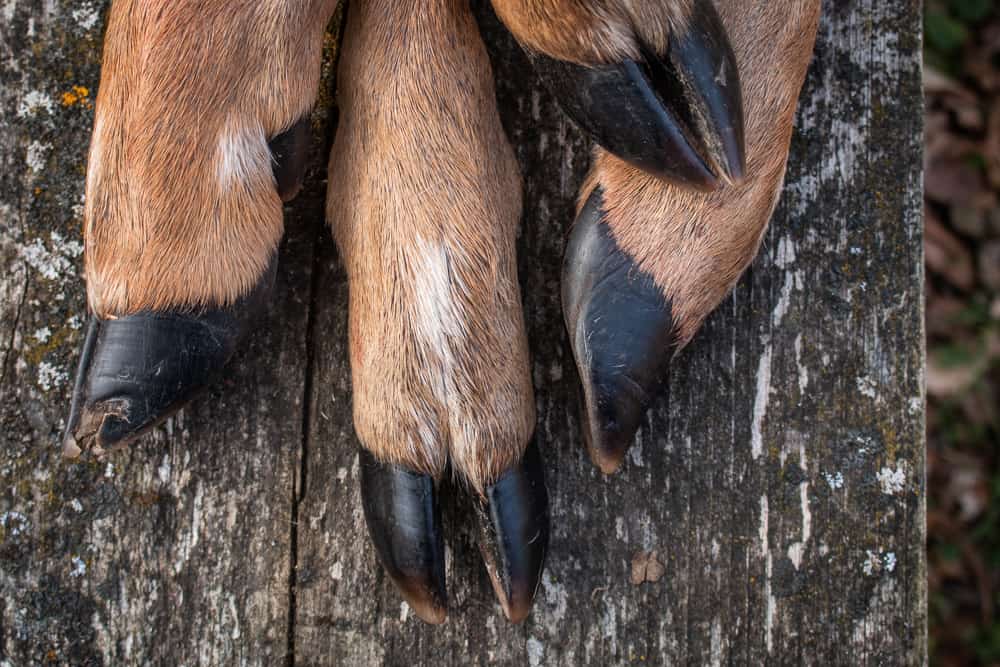
As I ate my way through 3 deers worth of feet, I gained more and more appreciation for them. There's a real elegance to their shape and utility.
Today, for your viewing pleasure, I present one of the most enjoyable culinary rabbit holes I've been down in a very long time.
Behold the lowly deer foot, also called venison trotters or Bambi tootsies. Yes, you can eat the feet of deer, including what's inside the hoof, and, although it might sound bizarre to most, I can guarantee you venison feet are delicious—much more than some trash to throw away or feed to the dog.
I was trained in whole animal utilization and offal cookery, so most of you know I'm all about finding creative ways to use animal parts, and when you get down to it, venison trotters are no different than goat, lamb and pork trotters, both of which are eaten around the world, the most famous European dish I know of being the quintessential "pied et paquets" (packets of sheep tripe served with a whole sheep foot, which I enjoyed in Provence.
Also, I have to thank my friend Sage Dakotah a clinical herbalist of Ojibwe and Dakota heritage for finding me the video on bison hoof soup from Yellow Bird Life Ways that got me started down this rabbit hole, err deer path? There's a link to the video at the bottom of the page. Thanks Sage.
Trotters are food too
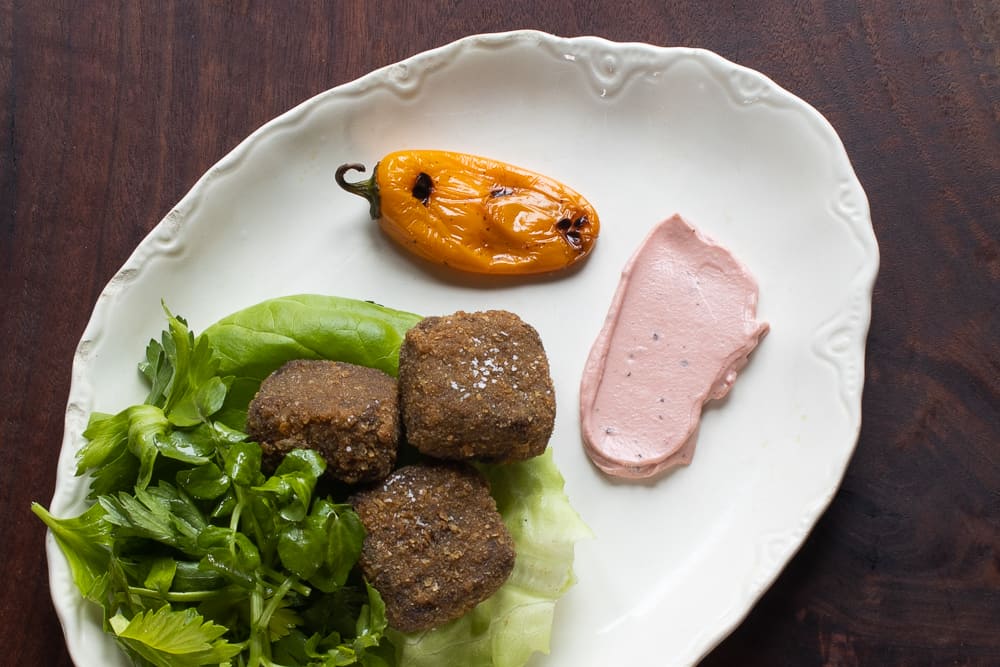
Venison trotter cromesquis. Think of them as crispy, meaty tater tots made from deer feet. No one has to know where they came from.
We have a bone broth industry in the United States, and collagen is all the rage—people buy it in supplement form and add it to smoothies and probably all kinds of things. We think of animal feet and trotters as dirty, and something to throw away, when they're one of the best sources of collagen, and make some of the richest stock out there.
I'd cooked with trotters plenty of times, but I was amazed when I watched the video on bison hoof soup, and saw Lisa Mni Iron Cloud demonstrate for Lynette Two Bulls and the audience how she removed the goodies from inside a cooked bison hoof to add to her soup. Fresh out of bison hooves, I started collecting venison trotters from the whitetails I butchered this year to experiment with.
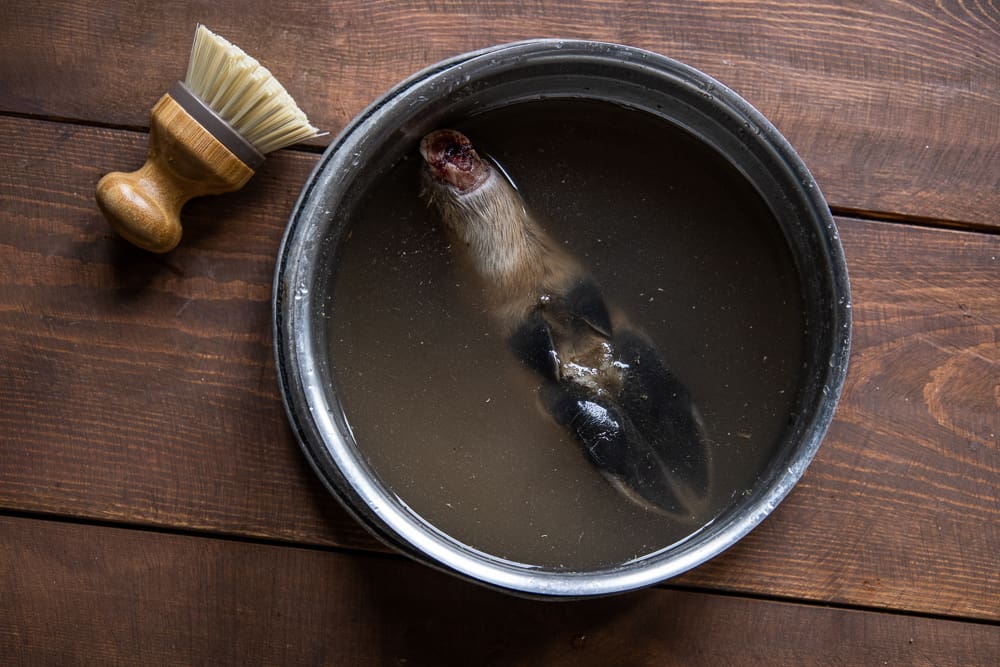
Some hooves I cooked were squeaky clean. Some weren't. A preliminary soak and scrub in warm water is the first thing that happens to deer tootsies.
Cleaning
The first thing I needed to figure out was how to clean the deer feet / trotters. Around the world people have different methods of preparing animal feet for cooking, such as torching them or roasting over coals to burn the fur, then scraping and repeating until the fur is gone and the skin remains. Blanching is another method people mention that's common with pork.
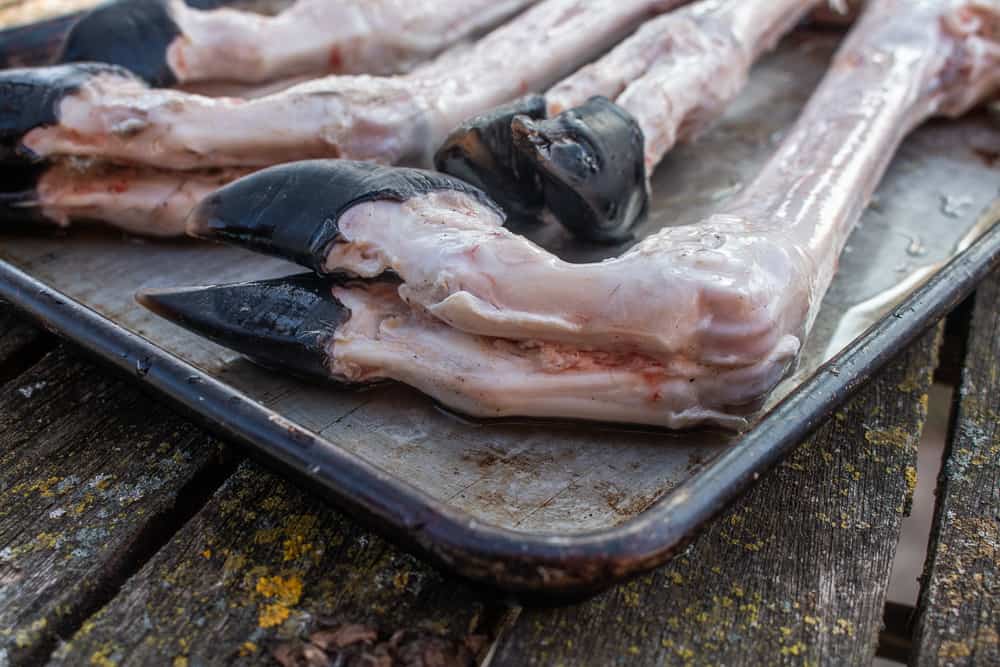
Skinned venison trotters, after these were cleaned, I cut them into thirds with a saw.
To singe, blanch or skin?
I tried burning the fur off my venison hooves, and, with a larger foot, like a bison hoof, I might give it another shot, but, singing venison trotters was a stinky crucible of burnt deer hair I won't be attempting again. Blanching and peeling was less stinky, but no more awkward, and the look I got from my partner when she caught me with a sink drain full of wet, hot deer fur I won't be forgetting anytime soon. Heh.
What I settled on was just skinning the legs and trimming around the hooves, using a serrated knife to do the detail work around the soft, upper portion of the hooves, and, compared to the two other options, I found it much easier. Since skinning removes the skin, I thought I'd be sacrificing a lot, and ending up with something that would only make good venison bone broth, but, as you'll see, my assumption was incorrect.
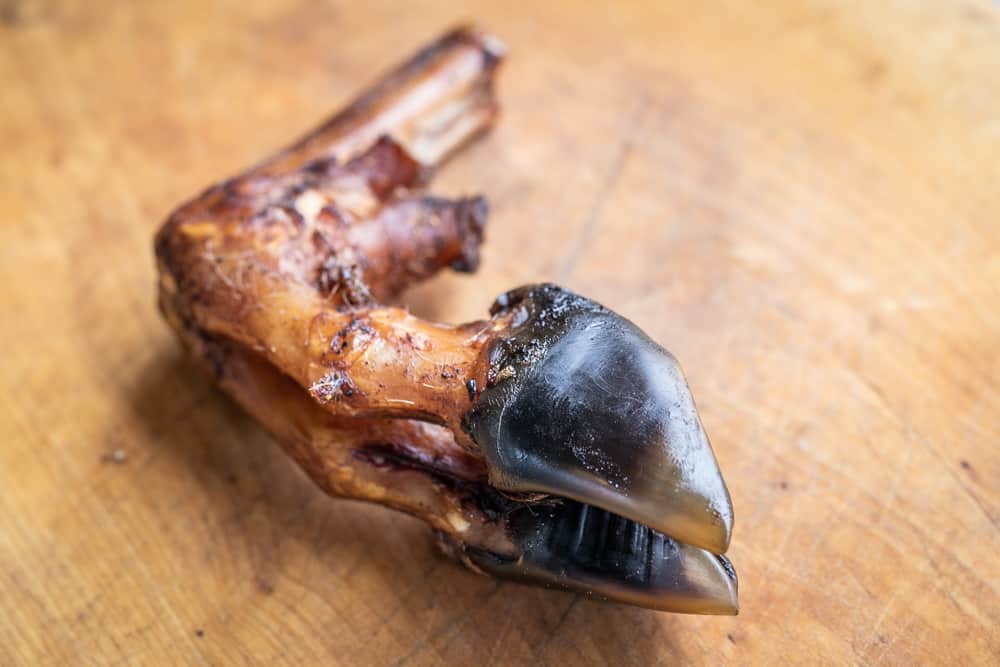
Cleaned, smoked trotters will make outstanding stocks and broth.
Cooking
Long, slow simmering is your friend here, and I recommend smoking the venison trotters first. Similar to venison ribs, skinned and cleaned venison trotters look void of meat, but, after smoking, and then long, slow cooking, all the connective tissue breaks down and reveals itself.
What you get left with after the trotters have cooked is a mass of flubbery wiggly tissue that will probably look like garbage to most people—rest assured it isn't. Once I saw the mass of connective tissue and tiny pieces of meat, I knew it would act the same as cooked pork trotters, and I knew then that I'd be making a lot more out of my deer feet than soup.
Finely minced and chilled, that cooked "meat" turns into a brick like a headcheese will, and can be the base for all kinds of tasty deer foot recipes, not the least of which are the venison trotter cromesquis, a sort of deep fried (or pan fried) tater tot I used to serve, and one Chef Russell Klein kept on his menu as an appetizer for many years at Meritage in St. Paul.
The hoof "oyster"
Probably the most exciting part of cooking the deer feet for me was what I call the hoof oyster. Once the feet are cooked to the beyond and falling apart, you take a little spoon and remove the goodies inside. There'll be a pointed bone, and some other small feet bones, but also, a smooth, ovoid nugget of decadent meat goodness.
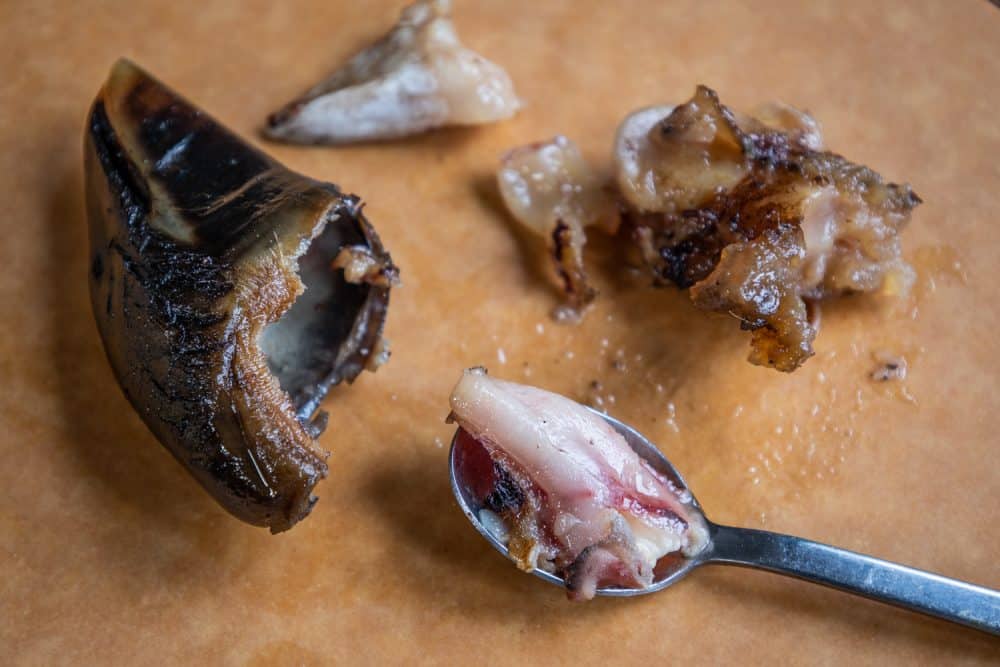
The "oyster" inside the hoof is a nugget of meat bliss most people will never get to try.
It's wiggly, and it's jiggly, occupying it's own place in a different culinary dimension where fat, collagen, and meat intersect. Sprinkled with salt (and a dash of hot sauce) it's a delicacy most deer hunters I know couldn't fathom. Try it straight-up, or, chop it up and add it to some of the recipes I'm sharing here.
Glands
Some people have mentioned tarsal and other venison glands here, asking if there's any danger of off-flavors and the like. What I can tell you from eating about 12 deer legs my self so far, is there I found absolutely no discernable flavors or gaminess that would in any way compromise my food.
I assume that the glands are removed from skinning, but I could be wrong. Either way, humans have eaten the feet of animals for a very long time, and we're still here. But, it would be remiss of me to not mention that it's a good idea to wear gloves when handling feet and wash your hands thoroughly afterword, since, like with any raw meat, there's the possibility of bacteria.
Recipes
Smoked trotter broth
This is the easiest way to dip your trotters in the water. See the how-to for cleaning trotters below, which will explain the process. All you need to do is smoke the cleaned trotters, then simmer them for 24 hours. The basic recipe's at the bottom of this post.
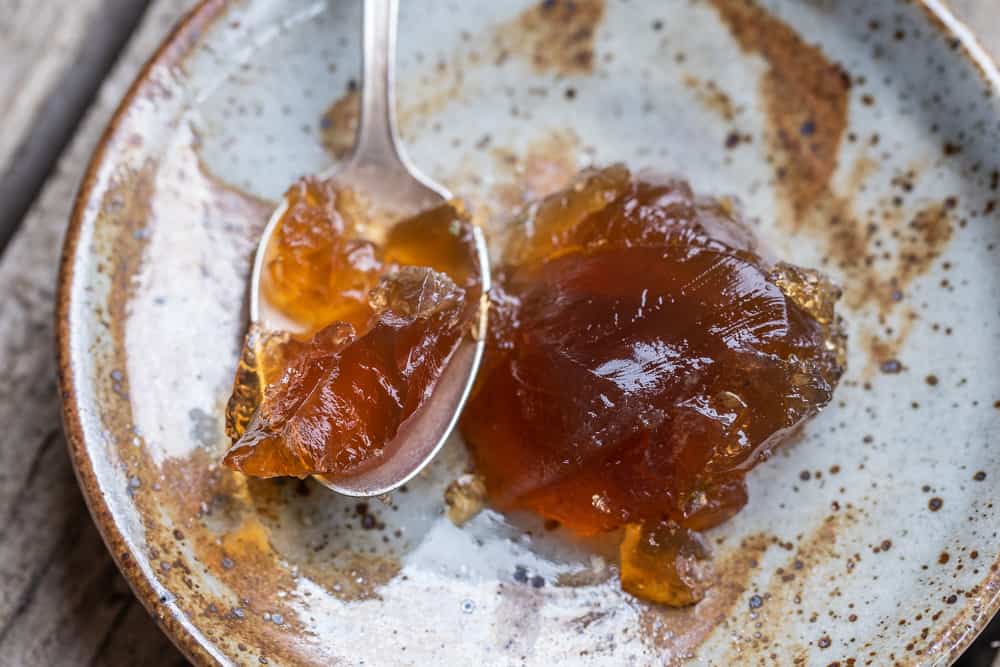
24 hour smoked trotter broth is rich stuff, and crystal clear.
Bapa Wohanpi Soup
The trotter broth is ultra-rich, so I made a traditional Venison bapa / papa wohanpi soup using all dried ingredients, simmered in smoked venison trotter stock: dried squash, timpsila, wild onion tops, hominy, and dried, salted venison. Props to my friend Linda and Luke Black Elk for sharing their video on how to make that (see below).
Trotter tots / cromesquis
The trotter "meat" , when finely minced and chilled, is solid as a rock, and the perfect thing for making cromesquis, or trotter cakes, a sort of deep or shallow fried tater tot filled with finely minced trotter.
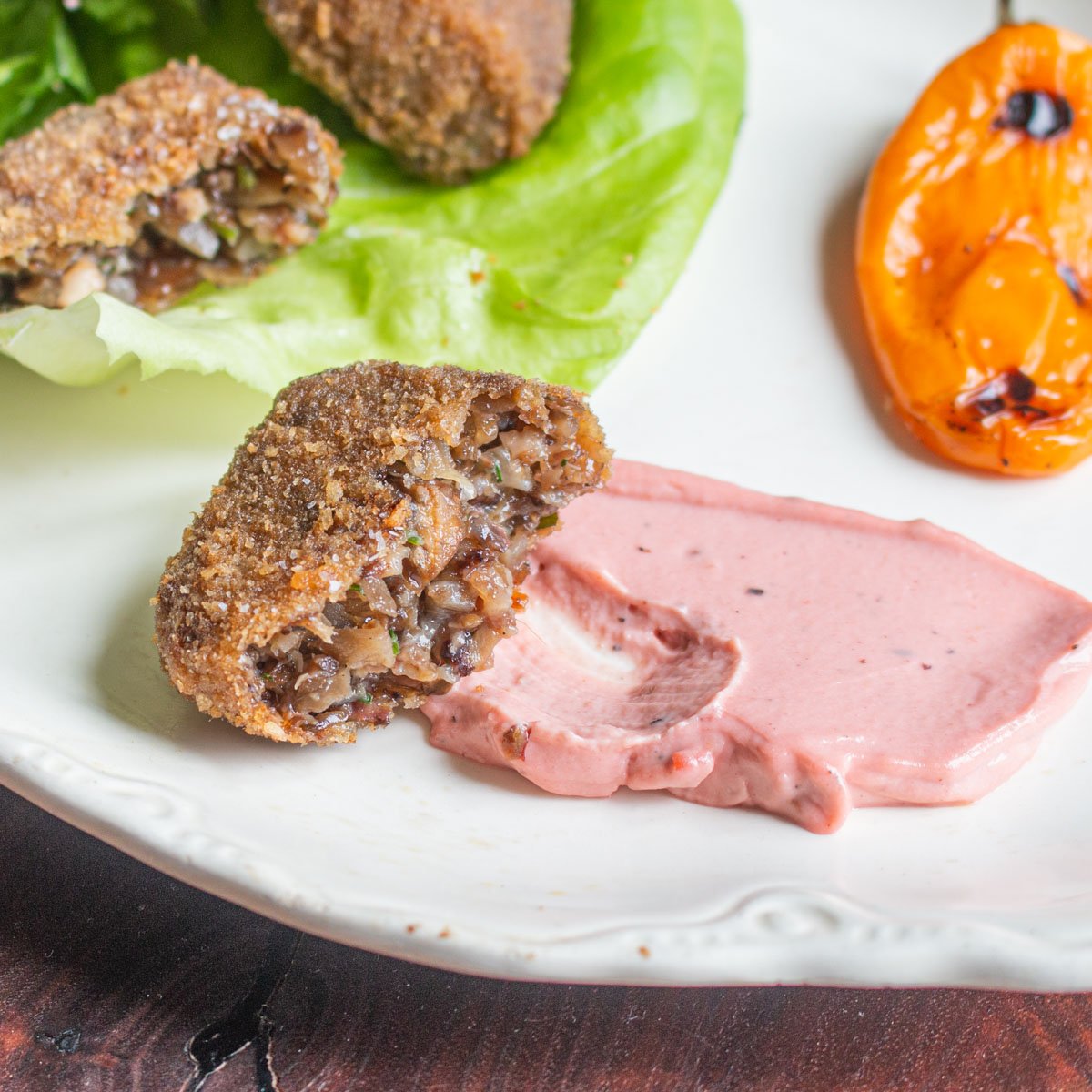
One order of bambi tots, please. (Also highbush cranberry puree makes a wicked tart aioli.
Steamed fish with trotter-mushroom sauce
Cooked, minced trotteres mixed with mushroom duxelles, lemon, herbs and wine is possibly the most decadent sauce for fish that you've ever had. Fish? Yep, fish, specifically mild, flaky white fish. The sauce is too rich for red meat.
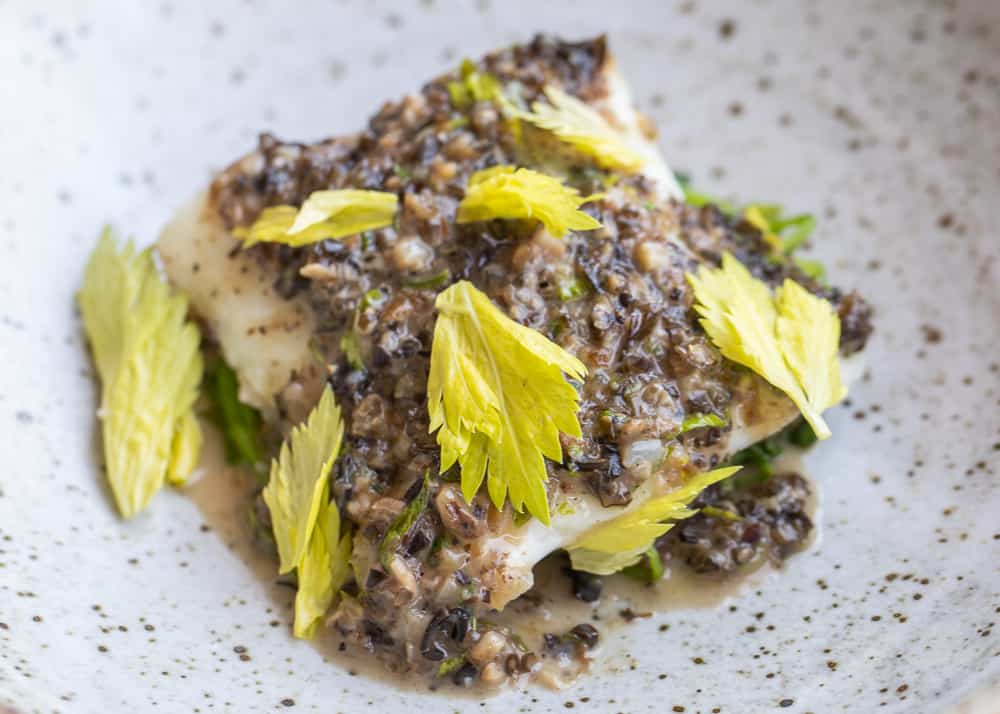
Steamed fish, with a hoof-based makeover.
Smoked Venison Shank-Trotter Terrine en Gelee
Like I mentioned above, the cooked trotter meat, after chilling is solid as a rock, and there's more than enough collagen in them for you to use them as the binding agent in a very nice terrine en gelee a la headcheese. One over-the-top treat I make occasionally is a slice of aspic terrine nestled in a grilled cheese sandwich—rich enough to make a butcher blush.
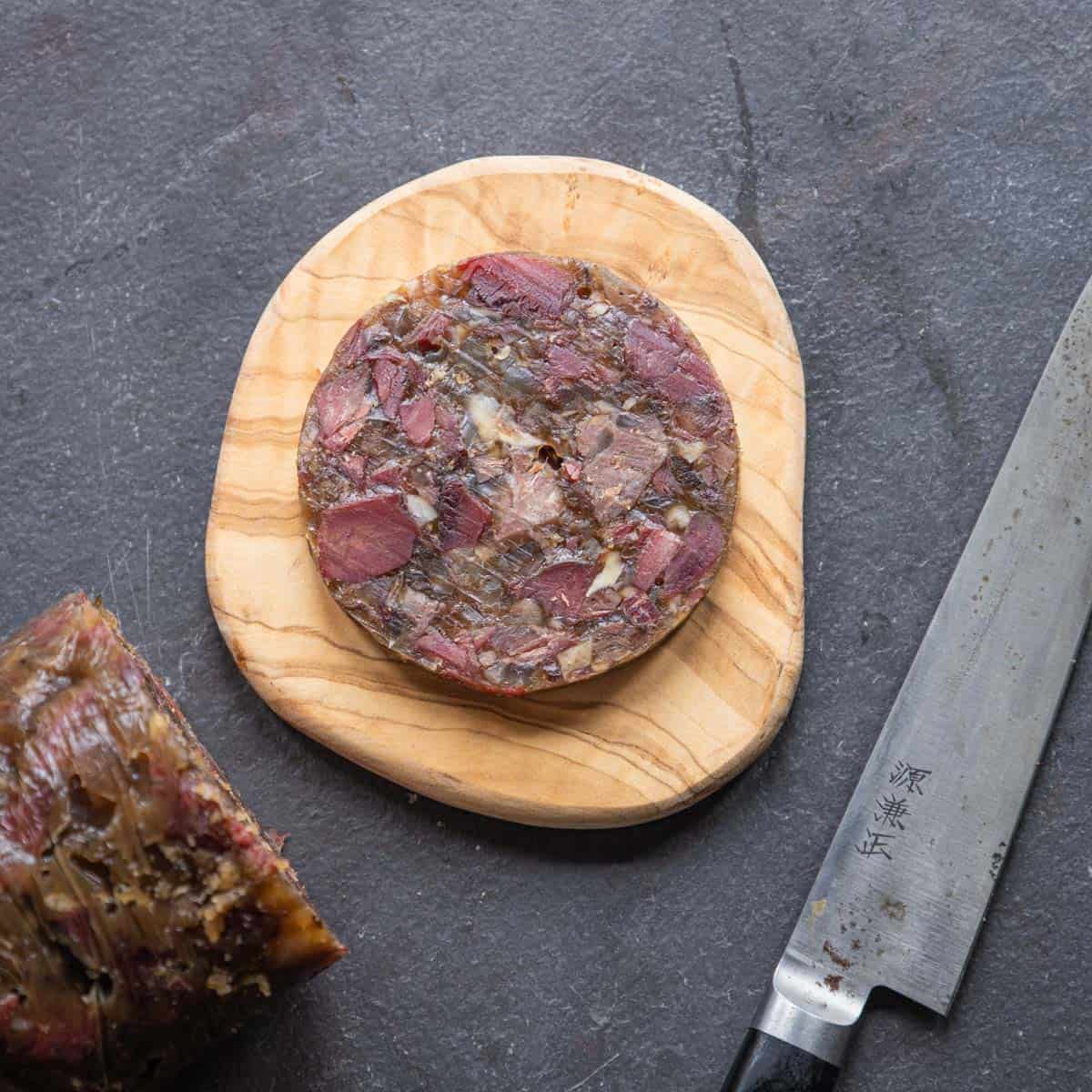
Smoked venison shank-trotter terrine en gelee tastes exactly like headcheese.
How to Clean and Cook Venison Trotters
Equipment
- Equip
- Legs of one or more deer, lamb or goat, cut off at the “knee” joint
- Warm water
- Scrub brush
- Bowls
- Bread knife or serrated knife
- Sharp paring knife
Instructions
Cutting the legs into pieces
- You can skin the top portions now, or save them for later—your choice. Preferably using a reciprocating saw, cut the legs into ⅓rds.
Clean the trotters
- Soak the bottom portions (trotters) in warm water, scrubbing the hooves with a brush, changing the water occasionally until it runs clean. Chill the hooves on paper towels for a bit to dry. Remove the hooves, and, using a freshly sharpened paring knife, make a slit in the skin and begin to articulate around the skin to help it release. Think of it like peeling a banana, if a banana were a foot.
Skinning
- Peel the skin down until you can’t reveal anymore, and you’ve reached the hooves, then cut around the venison trotter to remove the peeled hide. From here, cut through some of the connective tissue separating the two parts of the hoof so you can bend them apart.
Trimming around the hooves
- Now get the serrated knife. Cutting on a slight bias toward the bone, cut pieces of the hoof off to remove the remaining fur around the top of each “toe” until all the fur is removed. Repeat the process with the other trotters. Once the trotters are skinned and hairless, inspect them closely for any fur, and dirt that may be stuck on the bottom of the hooves, and clean them accordingly.
Video
Smoked Venison Trotter Bone Broth
Equipment
- Crock pot
- Reciprocating saw or heavy meat cleaver
Ingredients
Broth
- 1 large carrot cut into 1 inch pieces
- 1 large onion quartered
- 2 ribs celery cut into 1 inch pieces
- 2 dried bay leaves
- 2 large cloves garlic crushed with the back of a knife
- Sprig of fresh thyme or a pinch of dried optional
Optional Brine
- Legs and trotters of one deer goat or lamb, cleaned and cut with a saw into ⅓rds
- ¼ cup salt
- 2 qts water
Instructions
Optional brine
- Mix the salt and water until dissolved and brine the trotters and bones in it for 4 hours, or up to overnight (you can also just sprinkle them with salt if you're in a hurry.
Smoking
- Smoke the trotters and leg bones for 2 hours at 250F.
Build the stock
- Put the smoked trotters, leg bones in a crock pot or similar cooking vessel. Add the broth ingredients, putting the herbs on the bottom, cover completely with water by ½ inch and cook on low heat for 24 hours. It took me about 10-12 cups of water to cover my trotters.
Strain and reserve the meat if you want
- Cool the trotters in their liquid until you can handle them, then, using a slotted spyder or slotted spoon, fish remove the trotters and vegetables to a bowl. Remove every vegetable, herb, and bone except the hooves and discard, slipping off the connective tissue and leaving it in the bowl.
- For the hooves, take a small soup spoon and dig into the hoof itself to remove the choice “meat” inside, putting it all to one side of the bowl. Discard the cleaned hooves or save them to make Peruvian maracas. Save the stock for making soup, and save the "meat" for making trotter cromesquis, or one of the other recipes I outline here.
Extra Credit: Chajchas / Deer Hoof Maracas
Oh yeah baby. Chajchas are a traditional musical instrument from the Andes, and originally I started saving the feet of sheep I butchered this year so I could make a version of my own.
To make your own deer hoof maracas, you'll want to clean the hooves well, then boil, when they're still hot and tender from boiling, pierce them with a skewer or some other tool, and dehydrate them on the skewer until cracker dry, then thread them with a thin piece of string. I've also thought about making matching jewelry for the pitbull and I.
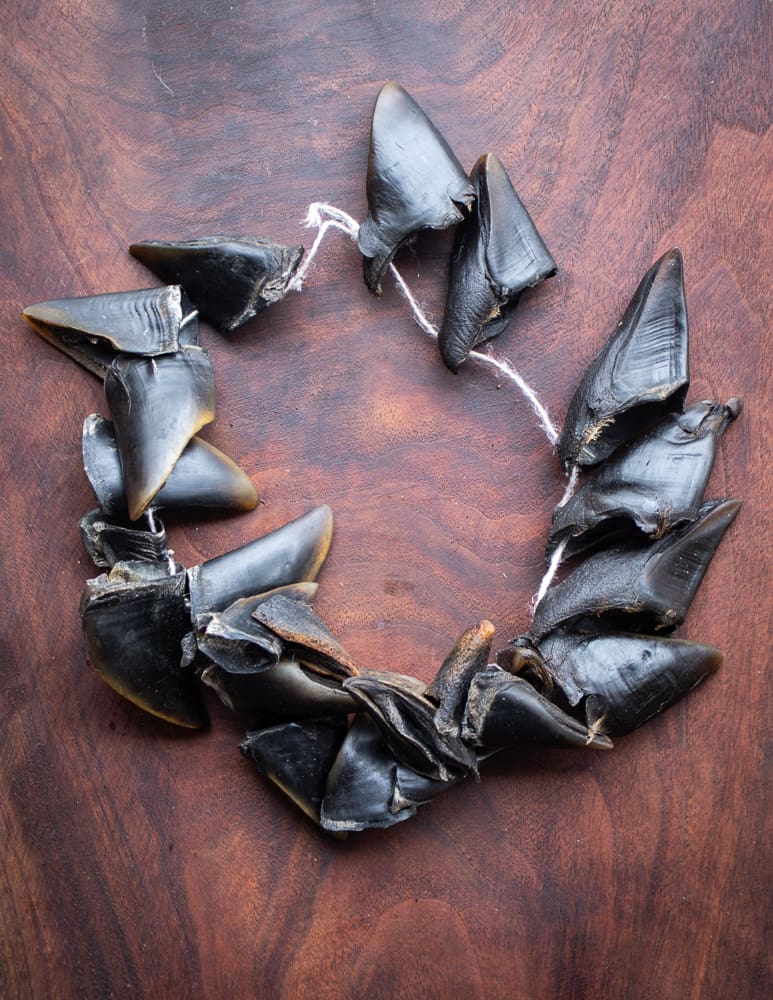
Chajchas are a traditional instrument used in Andean folklore.
Further reading/watching
Bison Hoof Soup
https://www.facebook.com/YellowBirdLifeways/videos/266817284552759/
Bapa Wohanpi Soup
https://www.facebook.com/lindablackelk/videos/3704511809611481

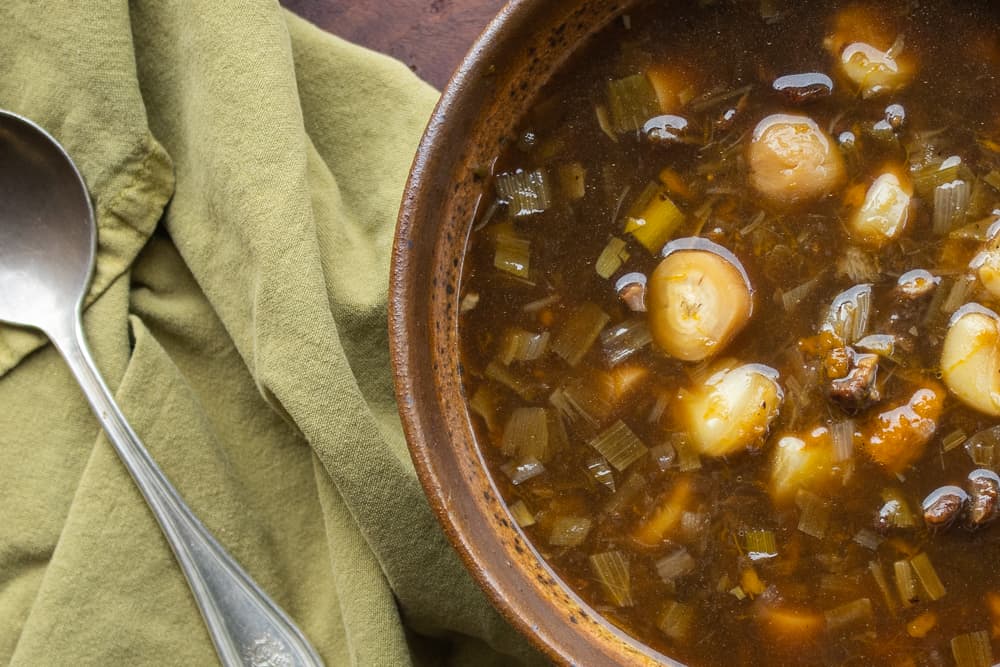
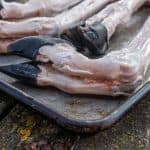
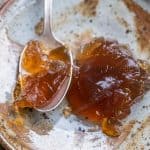
Marion Sansing
Hi Alan,
I recently skinned and boiled some venison trotters to make my own gelatin. Which I was successful in, but then I realized that I could not find a reference anywhere on how to preserve it. Do you have any insight? I very much appreciate your work and have made great use of it whether it comes to mushrooms or venison and I always give you credit on my Instagram posts.
Thank you in advance
Alan Bergo
In order to give you advice I’d need you to explain your process. Lots of variables there. Most likely fridge or freezer id assume.
Marion Sansing
Dear Alan, thank you!
I boiled the skinned trotters down, just with water until all parts fell apart, about 8 hours. I started with about a gallon of water, poured the hot liquid through cheesecloth and reduced it to a pint and a half, and put it in the fridge. I have read that gelatine can not be frozen, it changes its structure. I have put it in the fridge in a ball jar for now, but I was afraid it could mold if I don't use it soon. I was wondering how, centuries ago, it was preserved. Thanks!
Alan Bergo
Got it. So, I think we need to clarify what kind of gelatin the source is talking about, I suspect they're talking about leaf and powder gelatin, as it is definitely true for that. For reference, I use to freeze terrines bound with naturally made aspic like yours in 20-30 pound batches regularly since it's more efficient for labor cost. When the cooks need a terrine, they pull one from the freezer the night before and allow it to thaw in the fridge--never, ever had a problem. This is definitely not the same with commercially prepared gelatin in powder and sheet form, and I would never freeze a pastry, bavarian, panna cotta, etc, and expect it to keep it's integrity. I suspect there is something in the industrialization process of commercial gelatin that denatures how it hold's shape when cooled when it's subjected to low temps. Hope that helps, your homemade gelatin will be totally fine. But, I would be careful say, making a tart or a no-bake cheesecake that uses that gelatin to set, and freezing it for later use, in those instances cooked egg will be the superior binder IMO. Alan
Marion Sansing
You are the best, thank you so much! Sorry for the late reply
Owl
I preserve other bone broths by processing in the pressure cooker under 10 pounds of pressure for 65 minutes. Those numbers would require adjustment based on your own elevation but I have had excellent results preserving venison bone broth in this same way. I roast the raw bones sprinkled with apple cider vinegar before slow cooking.
Alan Bergo
Yeah that works great. I love a good broth.
Paula Cannon
Excellent post Alan, looks wonderful! I agree, if you take a life you should use all of it. I recently moved to North Georgia where everyone hunts deer and I’ve asked many hunters if they use the bones for stock. The answer always seems to be “NO”, and a twisted expression followed by, “they make terrible stock” this really surprised me. I see you smoked the trotters first, can you make stock with all deer bones and do you have to smoke them first?
Alan Bergo
Thanks Paula. Yes, with a caveat. You can make stock with deer bones, with the exception that it’s not recommended to use the spinal column if you live in. CWD area. Lots of hunters are misinformed, lazy, or just not adventurous. Venison bones are on par with any other animal for soups and stocks. People that say they aren’t are probably parroting folk “wisdom” as opposed to speaking from personal experience imo.
Cookie Ballard
I'm not likely to have access to "trotter" any time soon, bit i am interested in the cranberry aioli you mentioned . How do you make a cranberry puree?/aioli?
Alan Bergo
Mash highbush cranberries (Viburnum spp here--not bog cranberries or Vaccinium spp) add some water to cover, pulse with a handblender and strain. Reduce that liquid to a thick coulis, then mix with mayonnaise, add some herbs, etc.
Linda Reinhart
I bet lingonberries (Vaccinium vitis-idaea) would work for this, too. Here in Alaska, many call them "cranberries" because they are a red low-bush berry growing in damp, mossy places.
Alan Bergo
Yes they would, good clarification there!
Linda Reinhart
About 10 years before my husband died, he counted the deer, moose, and caribou he had taken for food. At that time it came to about 75, and didn't count smaller animals like sheep, goats, and bear. In all of that game processing it never occurred to us to use the feet. Now, I am so sorry of this, and now there is another reason to wish I could go back and re-live those decades. I am urging everyone to your website, especially our one son, Joe, who most closely follows his father's footsteps as a provider of wild foods. Thank you for providing this website, and a Merry, and safe, Christmas to you and those you love.